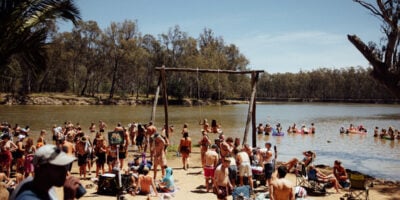“Cream always rises to the top,” is the super-optimistic mantra of an A&R executive. Sometimes it just takes a bit longer to rise.
Lizzo’s ‘Truth Hurts’ which this week spent its sixth week at #1 in the US, was originally released in 2017 and was a dud.
In February it went viral on TikTok after a meme around its lyric “I just took a DNA test, turns out I’m 100%” was spoofed in user-created videos.
It was quickly added on the deluxe version of her third album Cuz I Love You, which last month hit the US Top 5.
Watch the video for Lizzo’s ‘Truth Hurts’:

Similarly, Lil Nas X’s ‘Old Town Road’ was struggling to find a place until Billy Ray Cyrus’s remix sent it to becoming the biggest hit of the year.
A song’s commercial stripes can change.
Love Music?
Get your daily dose of metal, rock, indie, pop, and everything else in between.
The act becomes a live drawcard. Radio formats shift.
Audiences discover it through a K-Mart ad or social media. The record company creates a new campaign that actually works…
Florence + the Machine: ‘Dog Days Are Over’
‘Dog Days Are Over’ was a giant text installation in London by artist Ugo Rondinone, which referenced the dog star Sirius.
When it was closest to Earth, its effect on animals was to make them sleepy. When it moved away they’d wake up.
Florence Welch would see it every day for the six months it was up, as she cycled over Waterloo Bridge.
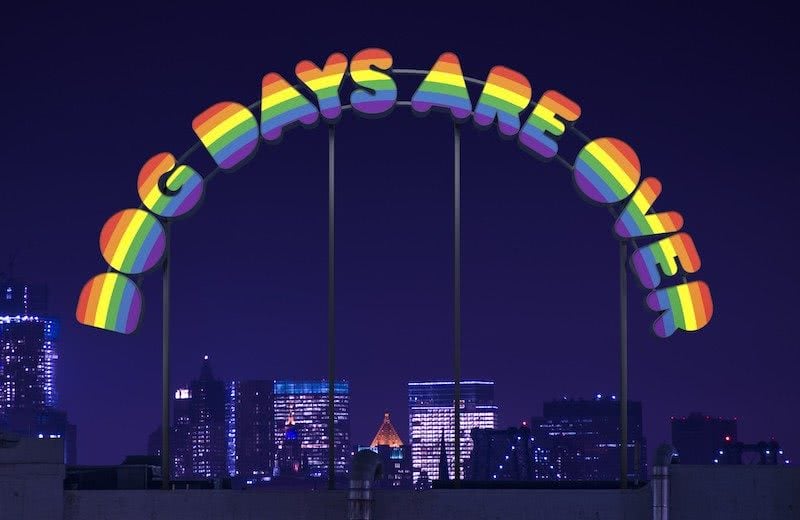
At the time, Welch was trying to come up with a sound for the first album and not happy with her ideas. Until ‘Dog Days’ came along with signpost in hand.
‘Dog Days Are Over’ was written in ten minutes, about the inevitability of happiness, and was made with no guitars but on a tiny dinky Yamaha keyboard.
The percussion was created from banging on a wall “while hitting a drum underneath it at the same time and the beat was really accidental.”
The record company dropped its collective jaw: “what the fuck is this?”
Its belief that it was left babysitting a loser consolidated when it came out in December 2008.
The track debuted at #89, dropped to #90 the week after and raced into oblivion after that.
Four months later it returned but peaked at #91.
Twelve months after its initial release, an appearance on the New Year’s Eve edition of the Jools Holland TV show and being featured in promos for Slumdog Millionaire and Julia Roberts’s Eat Pray Love turned its fortunes around.
By January 2010 it was making buzzing noises in the charts and heading for a #24 peak spot.
In the US it debuted in the Top 100 in September after being used in an ad for spy drama Covert Affairs, and the band played it to millions on the telecast of the Video Music Awards.
That did the trick. It sold 96,000 digital downloads in the week after, which gave it a #24 spot, and went on to sell 3.15 million downloads Stateside.
In Australia, it got no higher than #46.
Watch the video for ‘Dog Days Are Over’:

Hunters & Collectors: ‘Throw Your Arms Around Me’
A marvellous post-AIDS blend of seduction and romance, ‘Throw Your Arms Around Me’ remains one of the Hunnas’ best with later reconfigurations by Crowed House, Pearl Jam, Luka Bloom, Kate Ceberano, Tripod and the Doug Anthony Allstars.
Hunters & Collectors’ first version came out through Mushroom’s White Label imprint in 1984 and sank like a stone.
When H&C decided to ditch the early artiness on their 1988 breakthrough Human Frailty, they re-recorded the song and saw it enter the Top 50.
It now enjoys that status where it is played at weddings and funerals, and scooped up for a NRMA ad.
Watch the video for ‘Throw Your Arms Around Me’:

A 1990 version, more acoustic-based and melancholic, was lifted from their Collected Works compilation.
It seemed to settle in comfortably on commercial radio, and made it up to #34 on the ARIA chart.
The Cure: ‘Boys Don’t Cry’
When The Cure first released it in 1979, the lip-trembling ‘Boys Don’t Cry’ reached #99 in Australia.
Nothing to trumpet about from the rooftops, granted, but it did better here than in their home country England where it didn’t chart at all.
In April 1986, the ‘New Voice · New Mix’ (with new vocals by Robert Smith) sent it up to #26.
In the UK, it jogged all the way to #22 and sold 250,000 copies.
Watch the clip for The Cure: ‘Boys Don’t Cry’:

Yothu Yindi: ‘Treaty’
‘Treaty’ was written by Yothu Yindi members with Paul Kelly and Peter Garrett.
Its initial release was only supported by ABC Radio and SBS Television and it failed to chart.
Melbourne-based DJ Gavin Campbell (Razor Records) did the Filthy Lucre remix (with Paul Main and Robert Goodge) and gave it the dance sounds that saw it peak at #11 and gave the band and the message household status.
It became a global hit, reaching #9 in Belgium, #29 in the Netherlands, #33 in Switzerland, #72 in the UK and #27 on the US Dance Club Songs chart.
Watch the clip for Yothu Yindi’s ‘Treaty’:

Derek & The Dominoes: ‘Layla’
As the Sixties drew to a close, fans were scribbling ‘Clapton Is God’ on brick walls around London, and Eric was super-freaking out over such adulation.
It worsened when his closest rival Jimi Hendrix died. He had cried out at the news, “How can you go and leave me behind?”
In 1970 he decided to become the invisible man, releasing his album Layla and Other Assorted Love Songs as Derek and the Dominos.
His highly bankable name was only mentioned on the back cover. Derek and The Dominoes only lasted for that album.
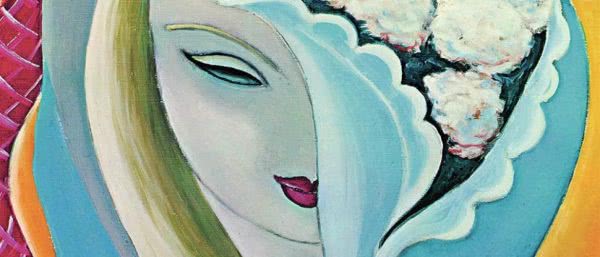
‘The album version of ‘Layla’ ran for 7.10 minutes, fuelled by the twin guitars of Clapton and Duane Allman weaving between hard-edged lines and a lengthy piano outro credited to Rita Coolidge, then partner of the song’s co-writer and Dominoes member Jim Gordon.
For radio it was cropped down to a reasonable length in 1971.The strategy didn’t work. It stopped at #51 in America.
It was more of a disaster in Australia: it pulled reins at #100.
A year later the full version began picking radio airplay when it was included on the History of Eric Clapton compilation and became a Top 10 hit in the US.
The song became Clapton’s signature tune in concerts, and in 1992, a new Unplugged version was released.
This probably caught the desperation of the song’s unrequited love theme (inspired by The Story of Layla and Majnun by the 12th-century Persian poet Nizami Ganjavi), reached #12 in the US and scored him a Grammy.
Art reflected life which reflected art: at the time, Clapton had the unhealthy hots for Patti Boyd, who just happened to be wife of his best friend George Harrison.
His desperation over unrequited love turned him to heroin. Eventually they were married for a time.
Daddy Cool: ‘Eagle Rock’
Now listen! ‘Eagle Rock’ was a monster smash in Australia from the get-go, in 1971, even if Sydney radio had to be prodded along a bit before coming to the party.
Daddy Cool’s live shows were already proving to be instant riots.
Twenty years after a landmark gig at Melbourne Town Hall when 5,000 fans tried to squeeze into a place built for 2,500, the city hosted a reception for them, and the mayor jokingly presented them with a bill for $21,000 worth of damages.
‘Eagle Rock’ went gold in eleven weeks (unheard of then for an Aussie act) and spent 17 wees at #1 (ditto) and returned to the charts in 1982 and peaked at #17.
But in New Zealand it needed three bites at the cherry.
It loped up to #17 in 1971, then #19 in 1986 and in 1990 went to #1 for four weeks and went Gold.
Watch Daddy Cool’s clip for ‘Eagle Rock’:

The Corrs: ‘Runaway’
Australia and The Corrs’ native Ireland were where ‘Runaway’ went straight into the Top 10 after its release in September 1995 as their debut.
People would weep as Andrea crooned away about making love only in the glow of candlelight.
But in the UK the six-tissue job only limped to #49.
They re-released it with a new b-side, ‘Love To Love You’, but it caught a flat tyre at #62.
After ‘Dreams’ gave them a Top 10 entry, with the resoluteness of a tax office investigator, The Corrs re-released it for a third try – and saw it soar to #2.
INXS: ‘Need You Tonight’
‘Need You Tonight’ had an expensive start.
Andrew Farriss came up with the riff while waiting for a taxi to take him to Sydney airport as he was flying to Hong Kong to work on new songs with Michael Hutchence.
He told the driver to wait for “a few minutes”, as he’d left something behind.
He emerged an hour later, the meter furiously ticking away, after having recorded a rough version on a cassette player.
The fourth single off the massive Kick album was tNXS’s only #1 in the US, and was also Top 10 in at least eight countries.
Watch the clip for INXS, ‘Need You Tonight’:

In Australia it peaked at #4. A Rogue Traders remix christened ‘One Of My Kind’ went Top 10.
In 2014 it went back into the charts to #28 after the success of the two-part Seven Network tele-series Never Tear Us Apart.
But the track had a problem in the UK when it came out in 1987: it stalled at #58.
However when it as re-released in Britain in 1988, it made it all the way to #2.
Faker: ‘This Heart Attack’
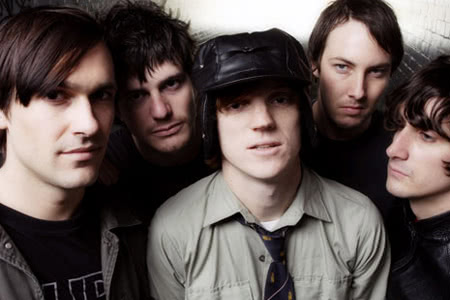
Released in October 2007 by Sydney band Faker it had a slow start, scraping the bottom end of the ARIA Top 50 and hanging around without getting too much love from anybody.
But featured on a much-screened promo ad for the return season of TV’s Grey’s Anatomy, it was picked up by commercial radio and by April was in the Top 10, certified platinum and stayed in he charts for half a year, and voted in at #5 in the triple j’s Hottest 100 2007.
AC/DC: ‘Highway To Hell’
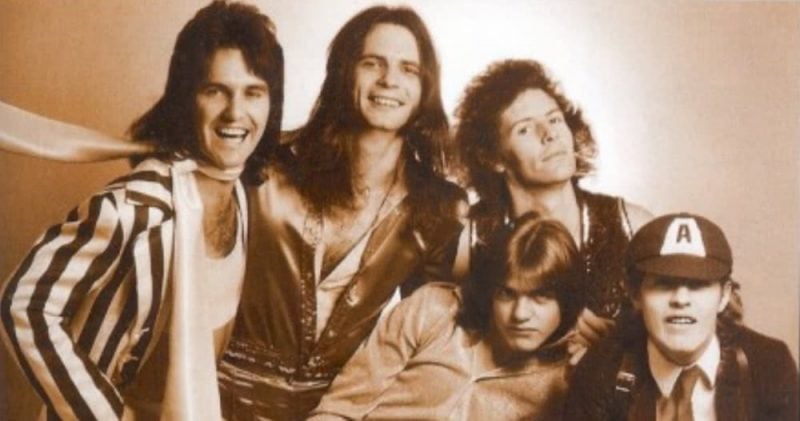
41 years after its release in Australia, we still don’t know whether the title of one of the best known songs by AC/DC is about touring, a pun on Led Zep’s ‘Stairway To Heaven’ or the nickname given to Canning Highway in Western Australia which led to Bon Scott’s favourite pub, The Raffles.
As the Canning weaves towards the Raffles, it goes into a steep descent, leading to the deaths of drivers who took the curve too fast, and hence given the nickname Highway To Hell.
As Bon would sing with a surly-to-bed attitude, “No stop signs… speed limits… nobody gonna slow me down.”
As Canning Highway gets close to the pub, it dips down into a steep decline: “No stop signs… speed limits… nobody gonna slow me down.”
Scott would ride his motorbike to the Raffles to go drinking with his mates. As in “Ain’t nothing I would rather do. Going down, party time, my friends are gonna be there too.”
In the UK it would take the song four tries before it attained hitsville status.
It peaked there at #24 in 1978, #56 in 1979, #40 in 2012 and finally #4 in 2013.
The 2013 effort came after two fans started a Facebook campaign to get the track up to be a Christmas Number One.
It was partly to celebrate the 40th anniversary of the band forming in Sydney, and partly to stop a pesky The X Factor contestant from getting there.
It became their first Top 10 hit there.
The Killers: ‘Mr Brightside’
It’s a booya on streaming services, a booya in games soundtracks, and a super-booyah in sports where teams around the world have picked it up as a theme song.
Yet the Las Vegas band The Killers’ debut single was a flop when first released in September 2003.
In the wake of the more successful ‘Somebody Told Me’, the record company decided to give it a second ride on the horse in November 2004.
The original indie-looking black and white video with the band playing in an empty room was dumped.
Singer Brandon Flowers was given a new haircut, and the new video was given a glamorous makeover based on the 2001 film Moulin Rouge.
Next minute the song – where Mr. Brightside is Flowers, after he woke up with a niggling feeling and high-tailed it to his favourite pub Crown and Anchor and caught his girlfriend cheating on him – was in the Top 10 in the US and refused to leave the Top 100 for 219 weeks and sold 4 million.
It also went Top 10 in the UK, and kept selling, in December 2018 finally hitting the 1 million mark there.
In Australia it got no higher than #29 but remains a go-to song at sports meets.
Killing Heidi: ‘Weir’
Ella Hooper and her guitarist brother Jesse Hooper grew up in the Victorian countryside where they formed Killing Heidi.
She was 15 when she wrote the ditty about hanging out with friends at a weir (or reservoir), and getting their thrills leaping into the water from a high mountain side.
‘Weir’ sounded totally different from what was blasting out on radio, and they got the cold shoulder from record labels and radio stations.
When it popped out as their first single in October 1999, only triple j gave it the time of day.
The Js picked up on its themes of lost innocence, rites of passage, sharing of secrets and not-overly-bright teen kicks.
Mainstream radio told their record label Roadshow Music it sounded too ‘alternative’ for them.
The label’s national promotions manager Michael Matthews got the band to do a new mix without guitars.
Next minute the song was at #6 and one of the great Australian ‘90s teen anthems found its place in the sun.
Watch Killing Heidi’s clip for ‘Weir’:

Peter Andre: ‘Mysterious Girl’
Peter Andre grew up on the Gold Coast and in 1984, as a 16-year-old, finished second to Wade Robson in a dancing competition where the prize was to meet Michael Jackson.
Mushroom Records’ pop imprint Melodian signed him up and he had a few hits in Australia before ‘Mysterious Girl’ – with a video shot on a Thai beach where Andre’s biceps were the stars of the show – started rumbles in the UK.
Andre quickly relocated in London (where he was born), flashed his six-pack endlessly and ‘Mysterious Girl’ peaked at #59 when first released there in September 1995.
A year later after more six-pack flashing, the sunshine reggae record made it to #2.
Eight years later, after a stint on I’m A Celebrity and after becoming a regular fixture in the celeb papers after he began dating model Katie Price, the song reached #1.
Simon & Garfunkel: ‘The Sound Of Silence’
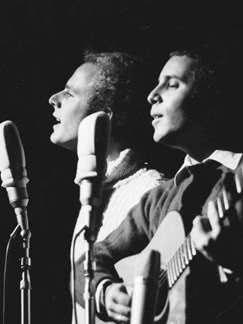
Don’t try this at home, kids. But in the early ‘60s, Paul Simon would write his songs in the bathroom because of its atmospherics – and he’d keep the water running because of its soothing nature.
‘The Sound Of Silence’ (originally ‘The Sounds of Silence’) was another one of Simon’s many sad songs about many sad things.
It saw light of day in 1964 as part of Simon & Garfunkel’s debut album Wednesday Morning, 3 A.M.
The record stiffed, and Garfunkel went back to college and Simon travelled through England.
For some reason, college radio in Boston and Florida started playing ‘The Sound of Silence’ off the album.
Buoyed by this, and without telling the pair, producer Tom Wilson piled on electric instruments and re-issued it in September 1965.
Debate about what the song meant ranged from the assassination of President John F. Kennedy to “the inability of people to communicate with each other (and) unable to love each other,” which was Garfunkel’s two cents’ worth.
The electrified and electrifying track rushed to #1 in the US and was a global hit in two dozen countries.
They included #1 spot in Japan and South Africa, #3 in Australia and #2 in New Zealand.
Ariana Grande: ‘One Last Time’
It would be wrong to say that the original 2014 release of Ariane Grande’s ‘One Last Time’ got ticked an epic fail.
But in the US it stopped at #13 and stopped Grande’s run of Top 10 hits.
In Australia it debuted at #27 and got no further than #15.
In the UK it took a slow train to #24.
But after the 2017 Manchester Arena bombing, fans adopted the song as their we-will-survive anthem, and Grande reissued it as a charity single.
It hot to #2 in the UK and sold 1.2 million units.
The 2017 version reached #35 in Australia but it enjoyed new peak positions of #1 in Scotland, #15 in Ireland, #11 in Spain and #23 in France.
Madonna: ‘Borderline’
The fifth single from La Ciccone’s 1983 self titled debut album, ‘Borderline’ did the job in most parts of the world, complete with a video that reflected her interest in Hispanic guys.
It had been written by producer Reggie Lucas for her after seeing the 24-year old perform and bringing out the sensual side of her.
Her first Top 10 in the US (and quickly sold a million and the first of an amazing run of 16 Stateside Top 10s) and most of Europe, and #12 in Australia.
Inexplicably, it stopped at #56 in the UK. Her next 36 singles were UK hits, however, and when ‘Borderline’ was reissued there in January 1986, it spent nine weeks in the charts and reached #2.
Watch Madonna’s clip for ‘Borderline’:

Feist: ‘1234’
Being used on Apple iPod ads created global hits for Jet (‘Are You Gonna Be My Girl?’), CSS (‘Music Is My Hot, Hot Sex’) and The Ting Tings (‘Shut Up And Let Me Go’).
Another was Canadian singer songwriter Feist after ‘1234’ was synched on the iPod Nano ad in 2007.
It was penned by Australian singer songwriter Sally Seltmann who wrote it for her own New Buffalo project but decided it would suit Feist better.
The collaboration took place after Seltmann and Feist toured Canada together in 2005, along with Broken Social Scene.
The Feist track was doing OK after its September 2007 release but the ad took it to a new sphere.

Half a million people took to Google to find out who the heck she was.
YouTube plays jumped 1,000% and downloads took a Superman-type leap from 2,000 a week to 73,000 and pushed her into the US Top 100 (her only track to do so and generated 1.2 million downloads) and Top 40 in the UK.
In Australia where triple provided support, its sales were additionally pushed along when it was used on an eBay ad.
The track went to #36 on the national Australian charts and it ranked #34 in the triple j Hottest 100.
Elton John: ‘Candle In The Wind’
The former Reggie Dwight’s original 1973 version, which name checks actress Marilyn Monroe with her real name Norma Jean and about the celebration of youth, was on his Goodbye Yellow Brick Road album.
The title was inspired by a line used about blues singer Janis Joplin who also died young in the late ‘60s.
It reached #11 in the UK but in America, it was the flip-side ‘Bennie & The Jets’ which was chosen to go to radio.
‘Candle In The Wind’ was only released as a single in the US in 1987, when John recorded the album Live in Australia with the Melbourne Symphony Orchestra.
It reached #6, and returned to the UK charts to #5.
In 1997, he performed it at the funeral of Diana, Princess of Wales and released it as a single, under the excruciating title ‘Goodbye England’s Rose’.
This reached #1 in 23 countries, including Australia (where it sold over a million copies), the US (sales of 10 million) and the UK.
At the time it sold 33 million worldwide, second only to the 50 million shifted by Bing Crosby’s ‘White Christmas’, according to the Guinness World Records in 2007.
Radiohead: ‘Creep’
It might be considered their signature tune, but Thom Yorke always had a problem with ‘Creep’, which he whipped off when at college.
For a start he didn’t like it, and was irritated when the record company insisted it be a single.
He was also told to dilute the line ‘you’re so fucking special’ with ‘You’re so very special’ – and which he still broods about to this day.
He grumbles it affected the “sentiment” of the song and it lost its anger as a result.
When first issued, in September 1992, ‘Creep’ ran into problems. Radio 1 called it “too depressing” and refused to play it, presumably to ward off a plague of wrist-slashing by the public.
Left out in the storm, it failed to stir the UK Top 75, stopping at #78.
At the end of 1992, a radio DJ in Israel started to spin it which in turn started to see it roll out worldwide, including triple j in Australia where the track got up to #6.
Then college radio in America leaped on the bandwagon, and ‘Creep’ made its way to #34 – still their biggest US hit.
It was also used in a 1994 episode of Beavis and Butt-Head; their US label Capitol gleefully fired off a marketing campaign with the message “Beavis and Butt-Head Say [Radiohead] Don’t Suck”.
The US and global success put the pressure on the band to give ‘Creep’ another try on the home turf – and this time, it sprinted up to #7.
This didn’t necessarily endear Yorke to the song in any shape or form.
According to him, he started to get fan mail from murderers in jail telling him they identified with the lyrics.
Even worse, Albert Hammond and Mike Hazlewood, the writers of The Hollies’ 1972 hit ‘The Air That I Breathe’, claimed ‘Creep’ had more than a passing resemblance to their tune.
The lawyers came at a run yelping, and Yorke had to share the songwriter credit with them.
Queen: ‘Bohemian Rhapsody’
‘The current success of ‘BoRhap’ is so phenomenal that its early successes were comparatively seen to be small-time.
Complete with 180 separate overdubs it had been an instant success when first released in 1975, selling 6 million copies worldwide.
Not bad for a song that started out with the feeble working title ‘The Cowboy Song’, no doubt a Wild West image in Freddie Mercury’s mind from the first line, “Mama, just killed a man.”
In Australia it went to #1 on original release, then #5 in 1992 after its headbanging inclusion in Wayne’s World (that scene took ten hours to film, and Brian May’s guitar solo was done in one take), and a third time following the blockbuster movie. Magnifico!
In the UK, where it is now third best seller of all time, it was played 14 times in its first weekend after release on Capital Radio by Freddie Mercury’s DJ friend Kenny Everett n his morning show.
Everett was one of the few trend makers who thought the track had something. Elton John gasped, “Are you fucking mad?” telling them it was too long and “too weird” for radio.
It sold a million copies in the band’s home market by early 1976, staying at #1 for nine weeks.
It then returned for a five week sprint in 1991 amidst the chest beating following Mercury’s death.
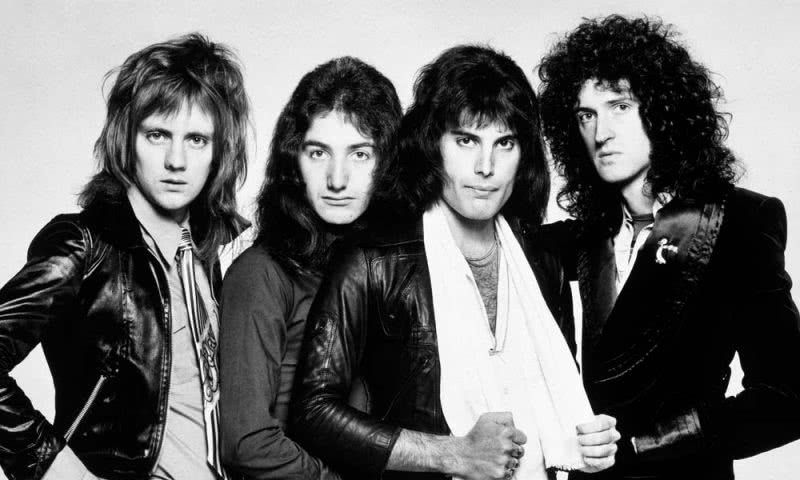
But it was in the US is where the track has been building on each sway into the charts.
It originally peaked at #9, and then #2 post-Wayne’s World and top spot recently after the hit movie.
Worldwide, in December 2018, ‘BoRhap’ became the most-streamed song from the 20th century, and the most-streamed of all classic rock songs, and exceeded 1.6 billion downloads.
Only July 21 2019, the video surpassed one billion streams on YouTube.
In the mid-70s, the video had taken three hours and £4,500 (about $30,000 Australian in today’s money) to make.
Watch the video for Queen, ‘Bohemian Rhapsody’:

































